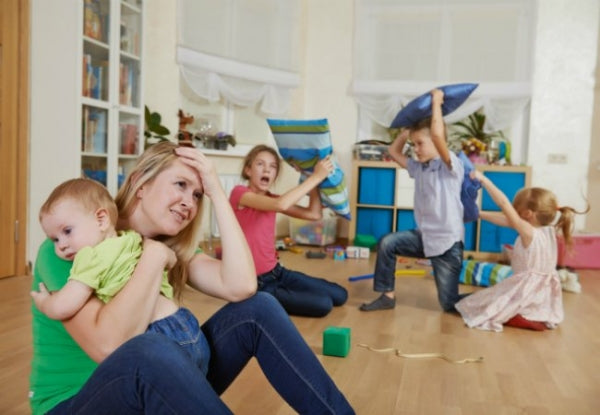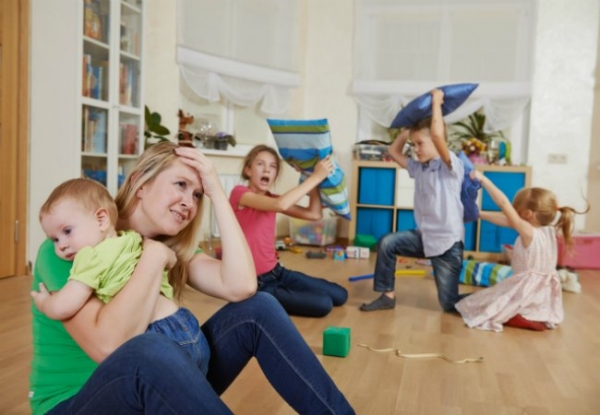Raise a Kid Who Loves The Earth
My children -- like many of their peers -- spend far less time in the fresh air than kids did in the past. That's unfortunate, experts say, since communing with nature offers so many benefits. Outdoor time helps kids get exercise, stimulates their senses, and promotes cognitive development. And it can also make children more relaxed. "Kids experience tremendous stress reduction from even a little contact with nature," says Richard Louv, author of Last Child in the Woods. A University of Illinois study found that just a 20-minute walk in the park reduced symptoms of attention deficit hyperactivity disorder.
Teaching kids to appreciate nature is as easy as it is fun. Our outdoor action plan will help you trade screen time for time beyond the screen door.


While kids often venture outside for organized sports or recess on paved playgrounds, unstructured playtime in nature is scarce. "Put away the Purell and let your kids learn to touch dirt again," suggests Les Stroud, host of the TV show Survivorman, who credits his adventurous adulthood to summer days he spent at a family cottage in the woods.
You don't need to head to the hills to find the pleasures of the wild -- you can do it in your own backyard. "My boys once spent hours watching a wasp repeatedly carry mud from a puddle to build a nest," says Jennifer Joyce, a Westminster, Maryland, mother of four boys, ages 4 to 9. "Afterward, they wanted to learn more, so we spent some time researching the insects together."
Give your kids a magnifying glass so they can take a bug's-eye view and explore. (Check out the book In the Tall, Tall Grass, by Denise Fleming, which looks at the yard from a caterpillar's perspective.) Some other ways to help children incorporate nature into their games: For young kids, make bingo cards with pictures of things -- around a rock, a small twig, a big tree -- they can hunt for in the backyard. Send older kids on a scavenger hunt around the neighbourhood to help them develop teamwork and strategizing skills. For a more advanced version of the game, use a regional field guide to trees, wildflowers, and critters.
Anyone who's tried keeping children from stomping through every puddle in a parking lot knows that kids love water. Ditch the myth that rainy days cause colds (viruses, which are actually more readily spread in dry air, are the real culprit). If there's no thunder or lightning in the forecast, send your children out in rain boots for some serious splashtivity. Have towels and dry clothes ready when they return, wet and happy from their visit to nature's water park.
The world smells and looks different when it rains. Ask your kids what they notice: Are the birds quiet? Do the clouds look different? Does a downpour sound like sizzling bacon? Check out the book Rain Play, by Cynthia Cotten, which evokes the sounds and sights of rainy days for prereaders. Stimulate your child's sense of touch by letting her squish her toes in the mud. Grab an umbrella and walk toddlers around the block, counting the earthworms gathered on the sidewalk. (Don't worry, they're not drowning; scientists believe they surface on wet days to quickly migrate above ground without drying out.) Let older kids compete to see who can make the biggest splashes out of even the tiniest of puddles.


Trekking through the woods may seem daunting, but most kid-friendly day hikes require no special gear aside from sturdy shoes and a backpack to carry water, nourishing snacks, sunscreen, and insect repellent. Get your kids in the hiking spirit by reading Follow the Trail: A Young Person's Guide to the Great Outdoors, by Jessica Loy.
Setting off on a family trek is a great way to build strong bonds. "You don't usually have the kind of interruptions outdoors that you have at home," says Parents advisor Michael Thompson, PhD, a psychologist and author specializing in children and families. "It's a different quality of experience for kids when their parents' heads are clear of distractions.
Jennifer Bebensee, a single mom from Corvallis, Oregon, started hiking when her daughter, Sami, was 2. "With no video games, TV shows, or ringing phones to disturb us, long walks in the wild allowed us to focus on ourselves," says Bebensee. "Now 16, Sami sees nature as a sanctuary from school or other teenage concerns. It centers her and gives her comfort."
Find an easy, kid-friendly trail through a local park or preserve. If you have a very young child, use a jogging stroller, if permitted, or carry him in an infant carrier or a baby backpack. Take along a digital camera and snap photos to help older kids focus on details they otherwise might not notice, Bebensee suggests. And make a game of counting trail markers, butterflies, or wildflowers. Families with school-age kids can try geocaching, a high-tech outdoor treasure hunt using a GPS to find "caches," small containers that have been filled with logbooks and trinkets by other hikers.
Joann Philpott, of Houston, started going to the Hana & Arthur Ginzbarg Nature Discovery Center -- a slice of the wild tucked away in nearby Bellaire, Texas -- when her kids were toddlers. "The exhibits encouraged them to touch, feel, and participate," she says. Now on the center's board, Philpott still visits regularly with her kids, ages 7 to 11. She credits the exhibits with turning them into nature lovers who prefer spending time at the family's small farm to, say, going to an amusement park.
To find a center near you, Google "nature center" and the name of your hometown. Most offer kid-friendly activities and easy-to-understand displays on endangered species, rescued animals, and the local flora and fauna. If you can't find a nature center nearby, pick up a copy of Take a City Nature Walk, by Jane Kirkland, an urban field guide for children. It can help your kids pay attention to the often unnoticed wildlife that's around them all the time.
A love of gardening runs up and down Stephanie Hein's family tree; she grew up on the rural Colorado vegetable farm her great-grandfather worked in the late 1800s. Today, Hein grows veggies with her children, Justin, 6, and Ellie, 3, in Boulder, Colorado. "All kids can participate on some level," she says. Younger children can dig holes or water plants, and older children can label plant markers. "My son is particularly proud when he sees vegetables from our garden on the dinner table. "
Don't fret if you don't have a back 40 to plow: "Start small and work up to a larger garden," says Hein. Try growing cherry tomatoes in a planter on a porch if you're a beginner or have limited space. Roots, Shoots, Buckets & Boots: Gardening Together with Children, by Sharon Lovejoy, will get the whole family excited about gardening.
Finding a great jungle gym doesn't require making a trip to a playground. Instead, encourage your child to climb the limbs of a sturdy tree. It's a great way to give kids a dose of adventure while they work on building their strength and dexterity. Make sure your child stays safe; don't let him climb beyond your reach! But keep things in perspective: Louv points out that kids today are at higher risk for repetitive stress injuries -- and those take longer to heal than most broken bones do. If your kid loves climbing and is ready to branch out, tree-climbing is growing into a hobby sport with specialized gear that lets kids as young as 5 reach greater heights. Check out treeclimbing.com for more info.
Children too young to climb can learn to love trees, too, when they sit in the shade or collect leaves. Tot-friendly field guides like Diane Burns' Trees, Leaves, and Bark show the many ways that trees benefit other living things.
For a complete nature-immersion experience and a vacation that doesn't break the bank, try pitching a tent. Roy Scribner and his wife, Lisa, take monthly camping trips with their three children, ages 4 to 8. "The kids always come home excited and worn out, and they talk about the trip for weeks afterwards," says the dad from Morgan Hill, California. "They're picking up on the fact that there's this bigger world out there, and they're curious about it."
If you aren't quite ready to sleep in the woods, try a backyard campout using borrowed or rented gear, or seek out ranger-led clinics at local parks or conservation areas. "Know your comfort zone and look for places where you'll feel confident taking the kids," says Stroud. It's important to have the right supplies, but you don't need much beyond a tent, sleeping bags, and a lantern or flashlight. Prepare your kids for their stay in the wild by reading S Is for S'Mores: A Camping Alphabet, by Helen Foster James. Then light a fire, pull up a log, and make some s'mores of your own.















